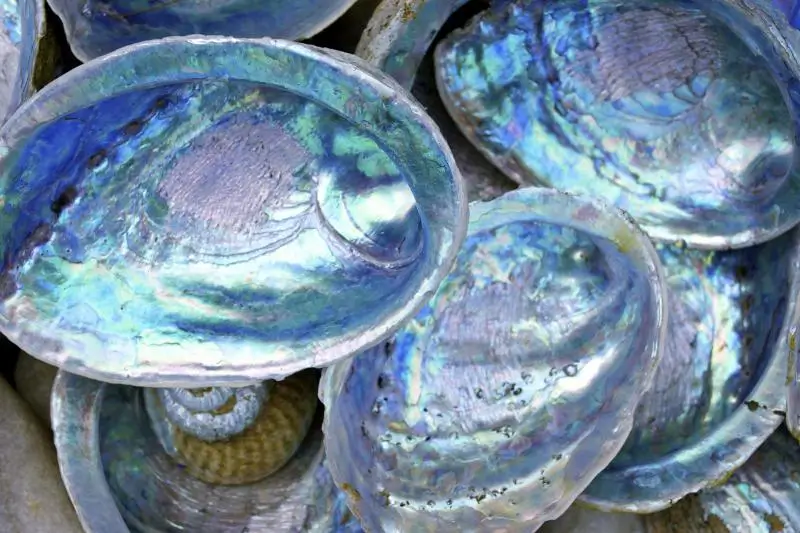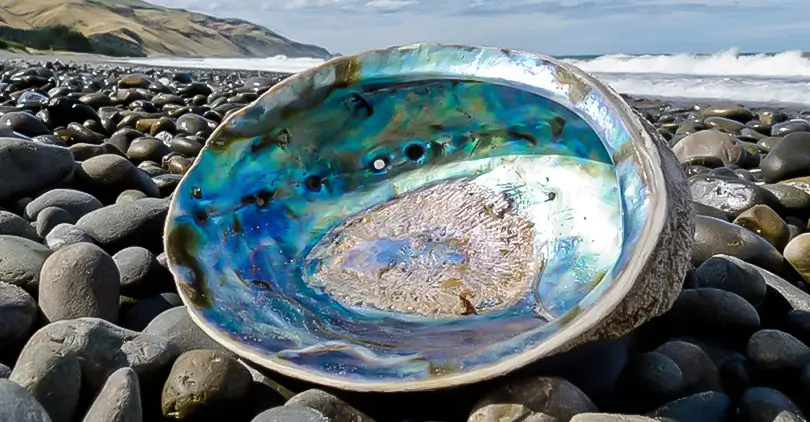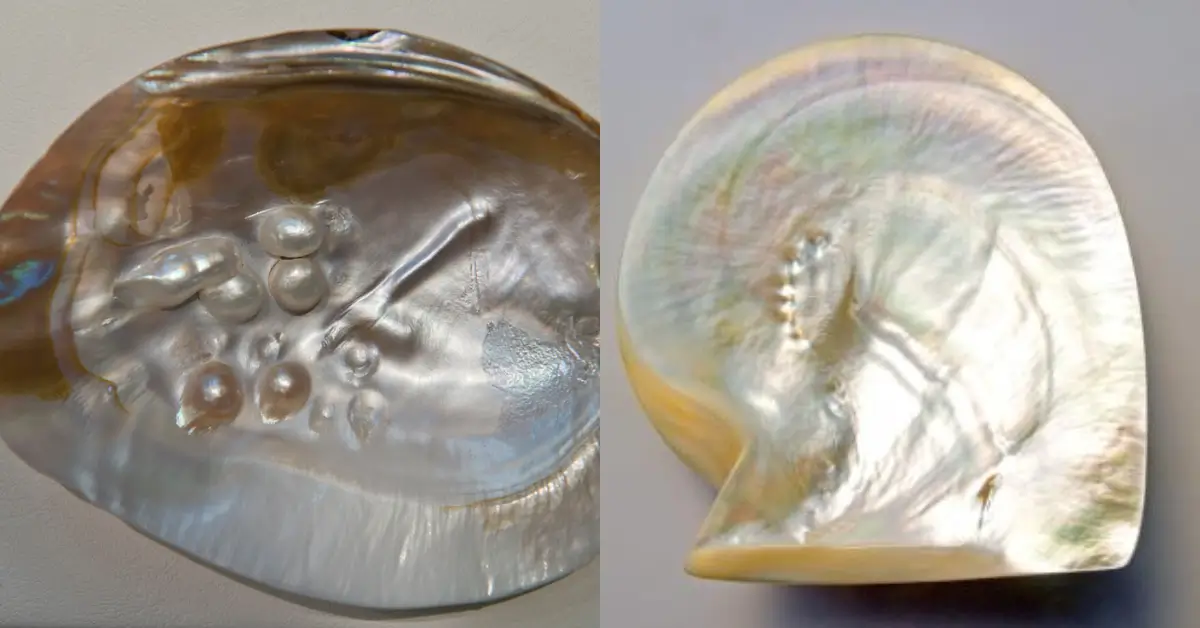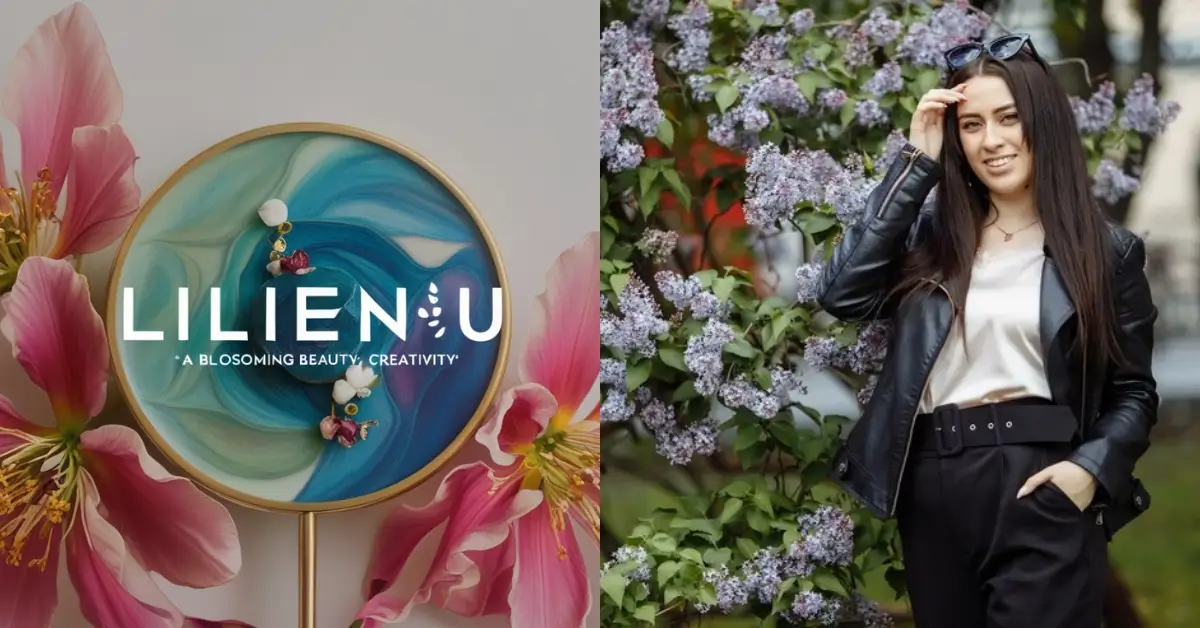Mother of pearl, also known as nacre, is a shimmering, iridescent material that has captured the hearts of artisans and jewelers for centuries. This organic gemstone, formed within the shells of mollusks like oysters and abalones, is not only a symbol of beauty and elegance but also a marvel of nature’s engineering. From its historical significance to its modern applications, mother of pearl remains a cherished material, revered for its luster, durability, and versatility.
What is Mother of Pearl?
Mother of pearl, or nacre, is the iridescent layer found on the inner surface of mollusk shells, such as oysters and abalones. This natural material is made up of layers of calcium carbonate, held together by a protein called conchiolin. The unique structure of nacre gives it its characteristic iridescence, making it highly sought after for use in jewelry, decorative items, and various crafts.

The term “mother of pearl” originates from the way it is formed—the nacre serves as the “mother” that gives birth to pearls within the mollusk. While pearls are formed when an irritant, such as a grain of sand, becomes trapped inside the mollusk, the nacre continues to coat the irritant with layers of calcium carbonate, eventually creating a pearl. Mother of pearl, however, is the material that lines the shell, providing protection and contributing to the overall beauty of the mollusk.
The Formation Process of Mother of Pearl
The formation of mother of pearl is a fascinating process that begins within the shell of a mollusk. When the mollusk is threatened by parasites or debris, it secretes a combination of calcium carbonate and conchiolin to form nacre. This biogenic material is laid down in microscopic layers, creating a smooth, iridescent surface that not only protects the mollusk but also reflects light in a way that produces a stunning rainbow-like effect.
This process is continuous throughout the mollusk’s life, leading to the formation of a thick, durable layer of nacre on the inner surface of the shell. Over time, this layer becomes increasingly iridescent, making it highly desirable for use in various applications, from jewelry inlays to decorative crafts. The natural iridescence of mother of pearl is a testament to the intricate and complex processes that occur within the marine environment.
Characteristics and Appearance of Mother of Pearl
Mother of pearl is renowned for its smooth, lustrous surface and its ability to reflect light in a myriad of colors. This shimmering surface, often described as “pearly” or “opalescent,” is what makes mother of pearl so distinctive and appealing. The colors of mother of pearl can range from white and cream to more vibrant hues, depending on the species of mollusk and the environment in which it lives.
The structure of nacre is what gives mother of pearl its unique appearance. The alternating layers of calcium carbonate and conchiolin create a diffraction pattern that interacts with light, producing the characteristic iridescence. This optical phenomenon, known as thin-film interference, is responsible for the shifting colors that seem to dance across the surface of mother of pearl, giving it an almost magical quality.
Also Read: Coomer Party Explained
Historical and Cultural Significance of Mother of Pearl
Throughout history, mother of pearl has held significant cultural and symbolic value in various civilizations. In ancient Egypt, it was used to create intricate inlays for furniture, jewelry, and religious artifacts. The Egyptians believed that mother of pearl had protective properties and often incorporated it into items meant to honor the gods and ensure safe passage to the afterlife.
In the Pacific, indigenous peoples used mother of pearl for a wide range of purposes, from crafting tools and weapons to creating ornaments and ceremonial items. The material’s natural beauty and durability made it a valuable resource in these cultures, where it was often associated with wealth, status, and spiritual significance. The use of mother of pearl in these regions continues to this day, with artisans creating stunning pieces that reflect the rich cultural heritage of the Pacific islands.
Modern Uses and Applications of Mother of Pearl
Today, mother of pearl is still highly valued for its beauty and versatility. It is commonly used in the creation of jewelry, where it is often set into rings, necklaces, earrings, and bracelets. The natural iridescence of mother of pearl makes it a popular choice for those seeking a unique, elegant look. In addition to jewelry, mother of pearl is also used in the creation of watch dials, cufflinks, buttons, and other fashion accessories.
Beyond fashion, mother of pearl has found its way into the world of interior design. It is often used as an inlay in furniture, musical instruments, and decorative items. The material’s shimmering surface adds a touch of luxury to any space, making it a popular choice for those looking to create a sophisticated, timeless aesthetic. Whether used in small accents or as a central design element, mother of pearl continues to inspire creativity and innovation in the design world.
Symbolic Meaning of Mother of Pearl in Different Cultures
Mother of pearl has long been associated with purity, innocence, and protection in various cultures. In many ancient societies, it was believed to possess healing properties and was often used in rituals and ceremonies to promote spiritual well-being. The material’s connection to the sea also made it a symbol of water, the moon, and feminine energy, further enhancing its mystical allure.

In more recent times, mother of pearl has come to symbolize elegance, sophistication, and timeless beauty. It is often given as a gift to mark significant life events, such as weddings, anniversaries, and graduations. The material’s natural iridescence is seen as a reflection of the inner beauty and strength of the person receiving the gift, making it a meaningful and cherished token of love and admiration.
How to Care for Mother of Pearl Jewelry and Items
Caring for mother of pearl jewelry and items is essential to maintaining their beauty and longevity. Due to its organic nature, mother of pearl is more delicate than other gemstones and requires special care to prevent damage. It is important to avoid exposing mother of pearl to harsh chemicals, such as perfumes, hairsprays, and cleaning products, as these can cause the material to lose its luster and become discolored.
When cleaning mother of pearl, use a soft, damp cloth to gently wipe away any dirt or residue. Avoid using abrasive materials or harsh cleaners, as these can scratch the surface of the nacre. Store mother of pearl items in a cool, dry place, away from direct sunlight and extreme temperatures, which can cause the material to crack or warp. With proper care, mother of pearl jewelry and items can be enjoyed for generations.
Differences Between Mother of Pearl and Pearls
While mother of pearl and pearls are both formed within mollusks, they are distinct materials with different characteristics and uses. Mother of pearl is the iridescent layer that lines the inside of the mollusk’s shell, while pearls are formed when an irritant becomes trapped within the mollusk and is coated with layers of nacre over time. This process results in the creation of a spherical or irregularly shaped pearl, which is often used in jewelry.
Mother of pearl, on the other hand, is harvested from the shell itself and is typically used in larger pieces, such as inlays for jewelry, furniture, and decorative items. While both materials share the same basic composition of calcium carbonate and conchiolin, pearls are generally more valuable due to their rarity and the time it takes for them to form. However, mother of pearl remains highly prized for its beauty, versatility, and the ease with which it can be incorporated into various designs.
Environmental and Ethical Considerations in Mother of Pearl Harvesting
As with any natural resource, the harvesting of mother of pearl raises important environmental and ethical considerations. Overharvesting of mollusks can lead to the depletion of marine populations and the destruction of delicate ecosystems. To mitigate these impacts, many producers of mother of pearl are turning to sustainable practices, such as aquaculture, where mollusks are farmed in controlled environments to reduce pressure on wild populations.
In addition to environmental concerns, there are also ethical considerations related to the labor practices involved in the harvesting and processing of mother of pearl. Consumers are increasingly seeking out products that are sourced and produced in ways that are fair and equitable to workers. By choosing mother of pearl items from reputable sources that adhere to ethical and sustainable standards, consumers can enjoy the beauty of this material while also supporting responsible practices.
Popular Items Made with Mother of Pearl
Mother of pearl has been used to create a wide range of items, from jewelry and fashion accessories to home décor and musical instruments. Some of the most popular items made with mother of pearl include:
- Jewelry: Rings, necklaces, earrings, and bracelets adorned with mother of pearl are timeless pieces that add a touch of elegance to any outfit.
- Watches: Mother of pearl dials are a popular choice for luxury watches, offering a unique and sophisticated look.
- Buttons: Mother of pearl buttons are often used in high-end fashion, adding a luxurious finish to garments.
- Furniture: Inlaid mother of pearl can be found in a variety of furniture pieces, from cabinets and tables to chairs and mirrors, creating a stunning visual impact.
- Musical Instruments: Mother of pearl is commonly used as an inlay in the fretboards and headstocks of guitars, as well as in other musical instruments, adding both beauty and value.
Quick Facts
- Mother of pearl is also known as nacre.
- Nacre is composed of layers of calcium carbonate and conchiolin.
- Mollusks, such as oysters and abalones, produce mother of pearl.
- Mother of pearl has been used for centuries in jewelry, decorative items, and musical instruments.
- The material is known for its iridescent and shimmering surface.
- Mother of pearl is associated with purity, protection, and elegance.
Final Thoughts
Mother of pearl is a truly remarkable material that continues to captivate with its natural beauty and versatility. Whether used in jewelry, decorative items, or as a symbol of elegance, mother of pearl remains a timeless choice that resonates with people across cultures and generations. Its unique iridescence and shimmering surface make it a standout material, while its rich history and cultural significance add layers of meaning to its allure.
By understanding the origins, characteristics, and ethical considerations of mother of pearl, we can appreciate this natural treasure even more. Whether you’re looking to add a touch of sophistication to your wardrobe, create a stunning piece of art, or simply admire the beauty of nature, mother of pearl offers endless possibilities.
Also Read: Josh Allen Girlfriend
FAQs
What is the difference between mother of pearl and pearls?
Mother of pearl is the iridescent layer inside a mollusk’s shell, while pearls are formed when an irritant inside the mollusk is coated with layers of nacre, creating a spherical or irregular shape.
How is mother of pearl used in jewelry?
Mother of pearl is often used as an inlay in rings, necklaces, earrings, and bracelets, providing a unique, lustrous finish that complements various styles.
Is mother of pearl sustainable?
Sustainable practices, such as aquaculture, are increasingly being used to harvest mother of pearl, helping to reduce the impact on wild mollusk populations and marine ecosystems.
Can mother of pearl items be cleaned easily?
Yes, mother of pearl items can be cleaned with a soft, damp cloth. It is important to avoid harsh chemicals and abrasive materials to prevent damage.
What are some popular items made with mother of pearl?
Popular items include jewelry, luxury watches, buttons, furniture inlays, and musical instruments, all of which showcase the material’s beautiful, shimmering surface.










